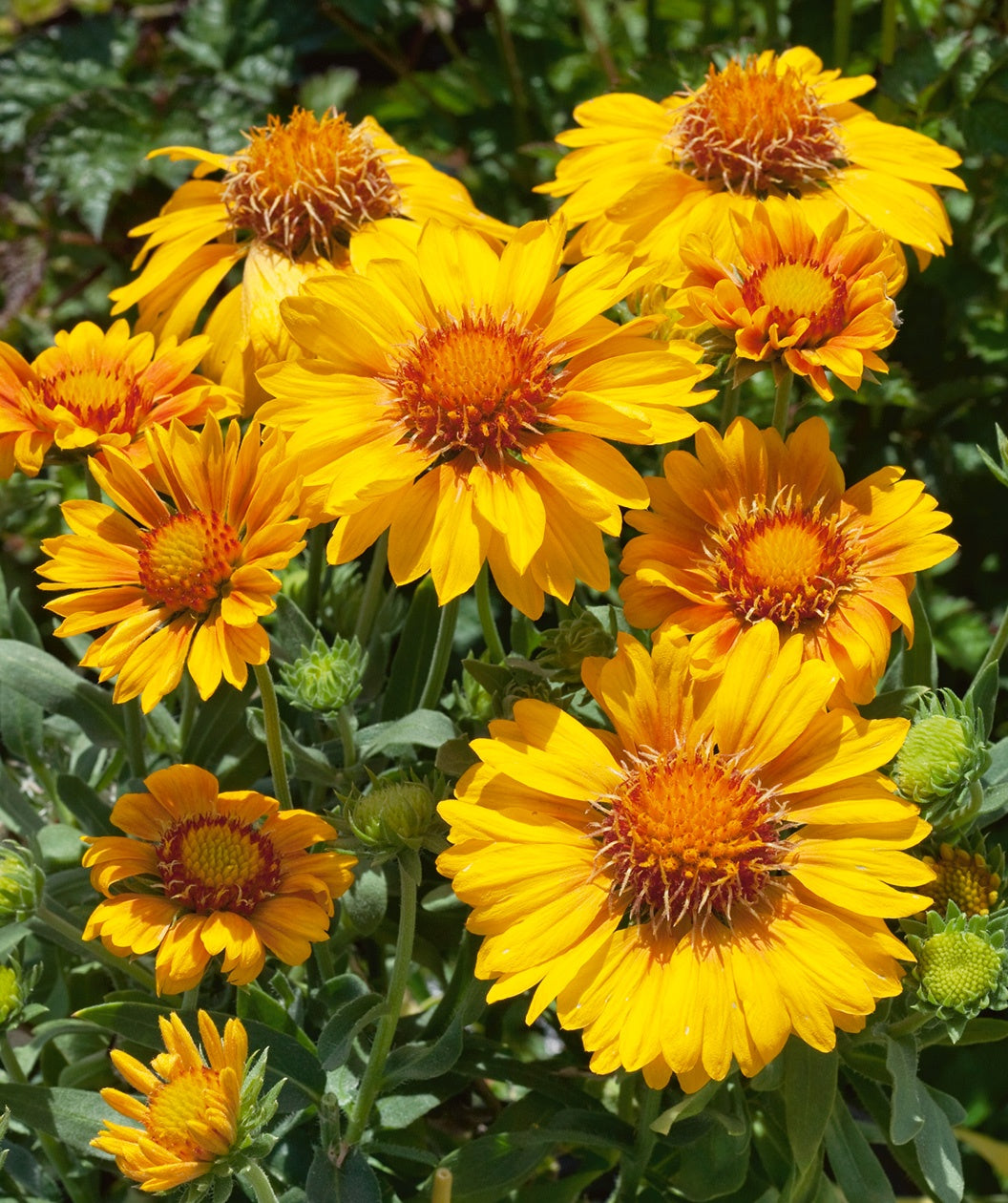LONG LASTING AND LARGE GOLDEN YELLOW FLOWERS FROM LATE SPRING INTO FALL
FEATURES:
- Large, bright yellow to orange blooms emerge from early summer to fall
- A fan favorite of bees, butterflies, and birds
- Flowering can be prolonged by removing spent flowers
- Deer and rabbit resistant
- Ideal in container plantings, cut flower gardens, and as a border plant
- Hand Selected, Fresh from the Grower
- Ships in a plant-safe designed box
Growth Facts
- Hardiness Zone: 3-9
- Mature Height: 12'' tall
- Mature Width: 12-24'' wide
- Exposure: Full Sun
- Spacing: 24'' apart
LONG LASTING AND LARGE GOLDEN YELLOW FLOWERS FROM LATE SPRING INTO FALL
FEATURES:
- Large, bright yellow to orange blooms emerge from early summer to fall
- A fan favorite of bees, butterflies, and birds
- Flowering can be prolonged by removing spent flowers
- Deer and rabbit resistant
- Ideal in container plantings, cut flower gardens, and as a border plant
- Hand Selected, Fresh from the Grower
- Ships in a plant-safe designed box
Growth Facts
- Hardiness Zone: 3-9
- Mature Height: 12'' tall
- Mature Width: 12-24'' wide
- Exposure: Full Sun
- Spacing: 24'' apart
Why plant Arizona Apricot Blanketflower?
Let’s take it down a notch. Blanket Flowers are high-energy plants best known for their flamboyant flowers in bicolor bullseye patterns of rich gold and hot red. Arizona Apricot offers a tamer (and quite lovely!) option. Its large flowers are adorned with warm peachy-orange petals tipped in clear yellow. These cheerful blooms emerge in early summer and continue into fall. The gentler color scheme makes it easy to incorporate Blanket Flowers into your landscape. Arizona Apricot makes a satisfying picture with blue- or burgundy-leaved plants, and it’s fantastic with blue or purple flowers. It doesn’t fight for attention, but complements its companions wonderfully.
The modern Blanket Flower is the result of a pair of American wildflower Spirits that went on a European vacation. The Common Blanket Flower is a perennial species that grows in the western U.S. from North Dakota to Colorado and California. Indian Blanket is an annual species from the American Southwest. In a Belgian garden in 1857, the two species hybridized, producing the form most often grown by gardeners today. Despite the name, Arizona Apricot is a variety that went back to Europe for further refinements. It was developed by the German firm Benary and hit our shores in 2011.
How to use Arizona Apricot Blanketflower in the landscape?
Flowers galore! Arizona Apricot Blanket Flower is one of the longest-blooming Spirits you can buy. If you deadhead it (snip off the spent blooms), you may get flowers from late spring until frost. Towards the end of the season, let some blossoms go to seed. Goldfinches will appreciate it. Plant this dynamic perennial in your cutting garden or along a border and enjoy the sunshine blooms all summer and into fall!
Planting Zones
Hardiness Zone: 3-9
How To Plant Arizona Apricot Blanketflower
A hybrid of two western species, Arizona Apricot Blanket Flower loves bright sunshine, low humidity, cool nights, and dry summers. The soil should be average to sandy, and sharp drainage is a must. Wet, clay ground—especially in winter—will mean a short life. In the best of circumstances, Deer and rabbits tend to have little interest in browsing Blanket Flowers, making them a great choice for many rural and suburban gardens.
How To Water
Water deeply and consistently during the first growing season. Once established, it is moderately drought tolerant.
How To Fertilize
Incorporate Elements Starter Plant food granular form into the soil when planting. If planting in spring or summer, start fertilizing late fall using Elements Starter Plant food granular form on an annual basis each late fall. Continue this for the first three years to get your plant well established.
How To Prune
To encourage a non-stop flower show, be sure to remove spent blooms. In early spring, prune it back to about three inches above the ground - leaving the last round of spent blooms as a source of food for the birds.
Arizona Apricot isn’t the longest-lived Spirit, but plants can be divided every couple of years to keep them robust (and you get more plants!). You can also grow new plants from seed.





